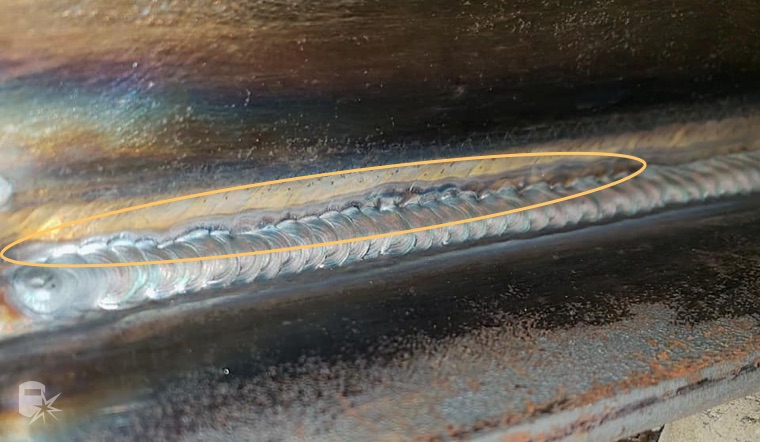Preventing Weld Undercut: Proven Approaches Every Welder Ought To Know
Preventing Weld Undercut: Proven Approaches Every Welder Ought To Know
Blog Article
Important Tips for Welders: Preventing Undercut Welding and Ensuring Stronger Weld Joints
In the realm of welding, accomplishing durable and strong weld joints is the foundation of producing top quality job. One usual difficulty that welders typically encounter is undercut welding, which can compromise the honesty of the weld joint.

Recognizing Undercut Welding
Undercut welding is a typical welding flaw that occurs when the weld steel fails to appropriately fill the groove and leads to a groove-like clinical depression along the weld bead. This issue compromises the weld joint, making it susceptible to splitting and failure under anxiety. Undercutting can be triggered by various aspects, consisting of extreme welding present, high welding rate, improper electrode angle, inaccurate electrode dimension, and poor welding method.
Among the primary factors for undercut welding is an imbalance between the welding present and the welding rate. If the welding current is too expensive or the welding speed is also quick, the weld steel may not appropriately fill the groove, causing damaging. Additionally, utilizing an electrode that is too big can lead to a comparable result, as the excess metal can not appropriately stream right into the groove.
To stop undercut welding, welders ought to ensure they are utilizing the right welding criteria, maintain an ideal electrode angle, pick the ideal electrode size, and practice proper welding techniques. By attending to these factors, welders can reduce the danger of undercutting and produce stronger, much more trustworthy weld joints.
Appropriate Welding Strategy
Effective welding strategy plays a vital function in ensuring the top quality and honesty of weld joints. One basic element of proper welding method is maintaining the proper angle and range between the welding weapon and the work surface.
Furthermore, a regular and consistent hand motion is necessary for developing solid and long lasting weld joints. Welders need to aim for smooth, consistent motions to guarantee also distribution of the weld product. Appropriate adjustment of the welding gun and filler product is also crucial to achieving ideal infiltration and combination.
Furthermore, managing the warmth input and selecting the proper welding parameters based on the product being welded are important consider accomplishing high-quality welds - Preventing weld undercut. Welders ought to adhere to the recommended settings supplied by welding treatment specifications and change them as required based upon the specific demands of the job. By understanding proper welding methods, welders can dramatically enhance the toughness and integrity of their weld joints
Selecting the Right Electrode
Keeping the correct angle and distance between the welding gun and the work surface is basic when considering the value of picking the appropriate electrode in welding applications. The selection of electrode plays an important role in figuring out the high quality and stamina of the weld joint. Electrodes can be found in numerous kinds, each created for certain objectives and products.
To start with, picking the proper electrode size is necessary. Thinner electrodes appropriate for welding slim materials, while thicker electrodes are better for thicker products and greater warmth applications. Matching the electrode size to the thickness of the workpiece helps achieve a balanced weld.
Second of all, recognizing the product structure of the electrode is crucial. Various electrodes are made for welding details products like steel, stainless steel, aluminum, or cast iron. Using the correct electrode product makes certain great fusion and minimizes the risk of issues in the weld.
Last but not least, thinking about the welding setting and technique is vital when picking the electrode type. For example, particular electrodes are better fit for vertical or overhanging welding positions, while others function well for level or straight positions. you can try here Picking the best electrode based on the welding strategy enhances the total weld high quality and integrity.
Preparing the Base Steel
To guarantee an effective welding procedure, what first steps should be taken when preparing the base metal for welding? In addition, any existing weld material or deposit from previous welding need to be removed to guarantee a clean surface area for the brand-new weld.

Conducting Post-Weld Assessments

After carrying out these evaluations, welders must compare the outcomes versus market requirements and project requirements to ensure that the weld joint fulfills all needed requirements. Any kind of inconsistencies or insufficiencies discovered throughout the post-weld assessment ought to be promptly resolved via appropriate rehabilitative procedures to guarantee the weld's integrity. By carefully carrying out post-weld inspections and without delay attending to any problems, welders can promote the quality and reliability of their work, inevitably contributing to the security and durability of the welded frameworks.
Final Thought

In verdict, avoiding undercut welding and ensuring more powerful weld joints need a mix of proper welding method, picking the ideal electrode, preparing the base steel properly, and performing post-weld evaluations. By recognizing the causes of undercut welding and applying the required preventative measures, welders can generate premium weld joints that fulfill market criteria and ensure the structural honesty of the welded elements.
Undercut welding is an usual welding flaw that occurs when the weld metal falls short to properly fill the groove and results in a groove-like anxiety along the weld grain (Preventing weld undercut). Undercutting can be triggered by different variables, consisting of too much welding present, high welding rate, inappropriate electrode angle, incorrect electrode size, and bad welding technique
One of the primary reasons for undercut welding is a discrepancy in between the welding existing and the welding rate. If the welding current is too high or the welding speed is too quick, the weld steel might not adequately fill the groove, leading to undercutting.Preserving the right angle and range in between the welding weapon and the work surface is basic when taking into consideration the importance of choosing look at this website the best electrode in welding applications.
Report this page